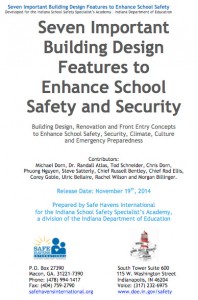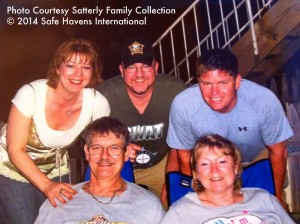The Indiana School Safety Specialist’s Academy released a new free guide to enhance school safety through building design.
The School Safety Specialist’s Academy recently released a new free guide titled Seven Important Building Design Features to Enhance School Safety and Security. Authored by a team of a dozen Safe Havens analysts, the guide is designed to help school, public safety, emergency management and homeland security officials as well as architects and engineers design safer, more secure and more pleasant schools. A pro bono project, this guide is the first of two guides Safe Havens is developing for the School Safety Specialist’s Academy. The guide takes a similar approach to the free guide Twenty Simple Strategies for Safer and More Effective Schools published by the Maine Department of Education in April. Eight Safe Havens analysts worked to develop that guide as a pro bono effort. The nineteen page Twenty Simple Strategies for Safer and More Effective Schools has already proven to be popular not only in the United States but in other countries as well.
Seven Important Building Design Features to Enhance School Safety and Security was released to more than five hundred attendees at the 2014 School Safety Specialist’s Academy on November 19th during my keynote session. The guide is also being distributed to the more than 7,000 certified School Safety Specialists who have been certified through the academy. We have had excellent feedback on both guides and are looking forward to the release of the next free guide in early 2015.
Please take a few minutes to check out Seven Important Building Design Features to Enhance School Safety and Security and pass it on to others who are concerned about school safety.
Seven_Important_Building_Design_Features_to_Enhance_School_Safety_and_Security-ISSSA_2014


